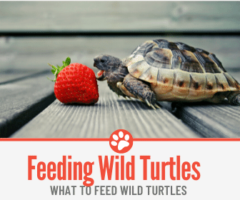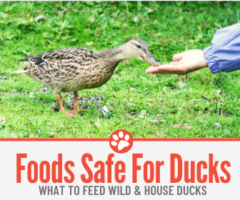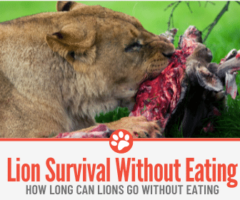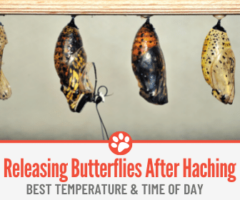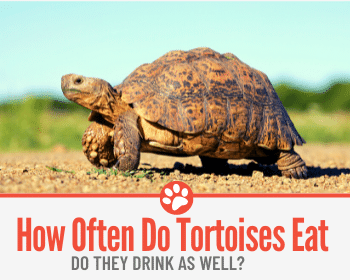 Knowing when and how much to feed your pet tortoise can be a worrying task, obviously you want them to be as healthy as possible.
Knowing when and how much to feed your pet tortoise can be a worrying task, obviously you want them to be as healthy as possible.
So, what do Tortoises eat and how often do they need to be fed?
How Often Do Tortoises Eat
Baby tortoises need to be fed routinely every day for the first year of their lives. Adult tortoises should be fed for five days of the week and should have two starve days to allow their slow-working digestive system to keep up.
Tortoises are herbivores and consume mostly grasses, weeds and leafy greens. Some species of tortoises can be fed fruit and vegetables, but not all. Whilst tortoises get most of their hydration form their food, water must be provided consistently and must be kept fresh, being changed every day.
Feeding your pet tortoise may seem like a scary task, but as long as you research and only use high quality produce, your tortoise will be happy and healthy. There are differences in amounts of food and types of foods between each tortoise species which we will cover in this article.
How often should I feed my tortoise, should it be every day?
Adult tortoises can be fed every day but it is recommended to give them a starve day twice a week. A starve day is a day without food and this allows time for the tortoise to digest as it has a slow digestive systems.
These starve days can be any day of the week but it must be consistent from week to week.
They should also not be back to back; a tortoise only needs to take one starve day at a time. These starve days will prevent the tortoise from doing a self-starvation period in the summer months as it has a healthy digestive system.
How long can tortoises go without food
Tortoises are robust creatures and, as long as their other needs are met, can go for several months without food. Although it is not recommended, it is possible for an adult tortoise to survive for 6 months of starvation.
This is only possible however with plenty of fresh water and perfect temperature and humidity settings. You should try to make sure to feed your tortoise five times a week, but if you are going away for a couple of days and absolutely cannot get anyone to feed them, with plenty of water they should be okay.
How often to feed baby tortoises , Do baby tortoises eat every day?
Baby tortoises, or hatchlings, need to be fed every day for the first year of their life and they should not be given a starve day. How often they should be fed per day, however, is still debated between tortoise enthusiasts.
Some people recommend feeding their daily amount all in one sitting, whilst others say you should split the food into two servings, one for in the morning and one for at night. Whichever way you decide to feed them, the most important thing is routine.
Make sure they are fed at the same time, or times, every day to maintain a healthy digestive system.
How often do tortoises need to drink
As well as food, water is an essential for all animals. However, tortoises mostly get their water content from the moisture in the food that they eat. Because of this, it was thought for a long time that this was how they hydrated themselves completely and that they didn’t need any extra water.
This is not the case and can sadly lead to a lot of problems in tortoises such as kidney failure.
Fresh water should be supplied daily in a small bowl placed in their indoor and outdoor run. They won’t drink massive amounts since they do get a lot of their water from food, but it needs to be there to prevent dehydration.
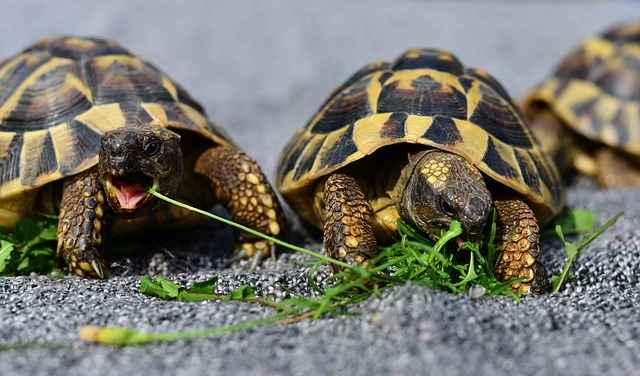
What about different species of tortoise, how Often and what should I feed them
Different species of tortoises do have differences in their diet. The most important thing when deciding what to feed your tortoise is to replicate its diet in the wild as closely as possible.
Whilst this is not always doable, pet stores provide dried tortoise pellet food, but experts recommend avoiding these if you can. They are not very nutritious and can cause health problems in certain species. Below I have outlined the dietary needs for some of the most popular species of tortoises that are kept as pets.
We will look at the requirements for the Sulcata Tortoise, the Russian Tortoise, the Desert Tortoise, the Hermann Tortoise, the Gopher Tortoise, and the Horsefield Tortoise.
Baby Tortoises
Whilst we did cover this previously in the article, I’ll summarise the main points here. Baby tortoises need to be fed routinely every day and do not require a starve day. Baby tortoises need to be kept on diet of a plants and weeds and they require a dietary supplement of Vitamin D3 twice a week for the first year of their lives.
Sulcata Tortoises
Sulcata Tortoises are known for being one of the most food driven species of tortoise, so it is important to structure their diet correctly. Hay and grass make up the bulk of their diet, approximately 90%. It needs to be pesticide free and free of grass trimmings.
Feeding alfalfa hay can cause kidney issues so it is recommended to use timothy hay or oat hay. The other 10% of their diet consists of vegetables and greens. These include grated carrots, pumpkin and greens include kale and dandelion greens. Sulcata tortoises need to eat every day, they require space to graze on for about 20 minutes per day.
Russian Tortoises
It is important for the bulk of the Russian tortoise’s diet to consist of dark leafy greens. These greens include Romain lettuce, kale and carrot tops. Fruit and vegetables should also be a part of a Russian tortoise’s diet, but it shouldn’t come to more than 10%.
Some fruit and vegetables to feed your Russian tortoise include apples, bananas and bell peppers. Its food should be dusted with a calcium supplement, this is most important when they are younger and still growing. You can feed your Russian Tortoise for five or six days a week, implementing one or two starve days. Whatever you decide, make sure it is consistent.
Desert Tortoises
The most important components of a Desert Tortoise’s diet are grasses, weeds, and leafy greens. These make up about 85% of its diet. Grasses you can feed your desert Tortoise include clover hay, alfalfa hay and Bermuda grass.
The leafy greens you can feed it include dandelion greens, grape leaves and watercress. Cabbage can be fed, but only sparingly as it can cause thyroid dysfunction. Avoid feeding your Desert tortoise lettuce as it has very little nutritional value.
The other 15% of its diet is made up of vegetables including carrots, peas, and pumpkins. You can feed Desert Tortoise five days a week, with two routine starve days.
Hermann Tortoises
A Hermann Tortoise’s diet should consist of weeds, edible plants and leafy greens. There is a good selection of things you can feed your tortoise including dandelions, plantains, clover and hebe.
You should not feed you Hermann tortoise fruit and vegetables as it is not a part of its natural diet and can upset its digestive system. But some people do feed their Hermann Tortoise fruit without issue, so if you really want to, only feed very sparingly and only feed it fruits such as figs and strawberries. Don’t feed you tortoise any plants grown from bulbs, such as daffodils.
You can offer your Hermann tortoise hay as an extra source of fibre, but Hermann Tortoises are known to be picky and might not accept it. Hermann tortoises can be fed daily or you can choose to feed for six days a week and give them one starve day.
Gopher Tortoises
Grasses make up 80% of the Gopher Tortoise’s diet, these grasses include Bahia and blue grass. The other 20% of a Gopher tortoise’s diet should be made up of dark, leafy greens. Gopher tortoises also enjoy dandelions, beans and corn as treats.
They can have fruit but it must be fed very sparingly as it is high in sugar and can cause illness. Some fruit that can be given as treats are apples, bananas and watermelons. In the wild they have also been known to eat low-hanging berries such as blueberries and blackberries.
The Gopher tortoise can be fed daily with grasses to graze on and a small amount of vegetables, but fruit should only be given every two to three days.
Horsefield Tortoises
Like all the other mentioned tortoises, the Horsefield Tortoise has a diet completely formed of vegetation. They enjoy eating dandelions, clover and watercress. Leafy greens make up the bulk of the Horsefield Tortoise’s diet, the smaller part of their diet should consist of grasses and weeds.
Good, nutritional weeds include plantains, white nettles and chickweed. Avoid feeding your Horsefield Tortoise fruits and vegetables. Horsefield Tortoises should not be fed every day and should be given a minimum of one starve day a week, preferably they would have two starve days.

Related topics
How much do tortoises eat? For calculating the amount of food, the general rule is to feed an amount of food which equates to the size of your tortoises shell every day.
Do tortoises need dietary supplements? It is important to have a vitamin/calcium dietary supplement for your tortoise. These usually come in powders and are sprinkled on your tortoise’s food. These should be added to your tortoise’s daily amount of food about 2-3 times per week.

